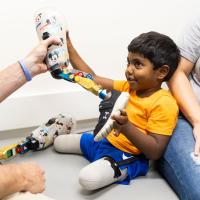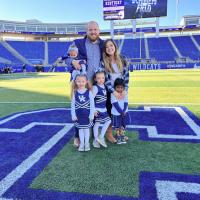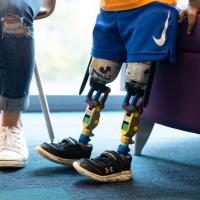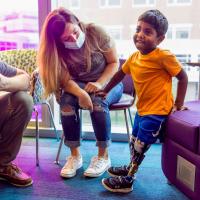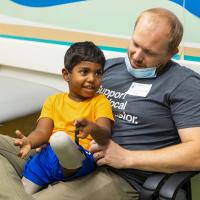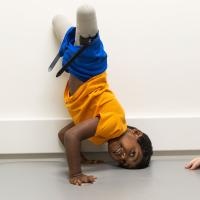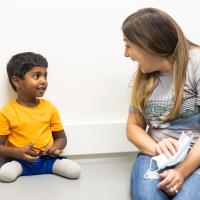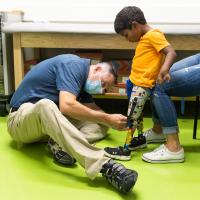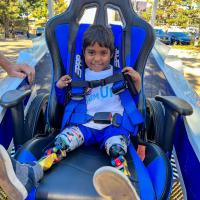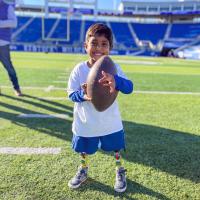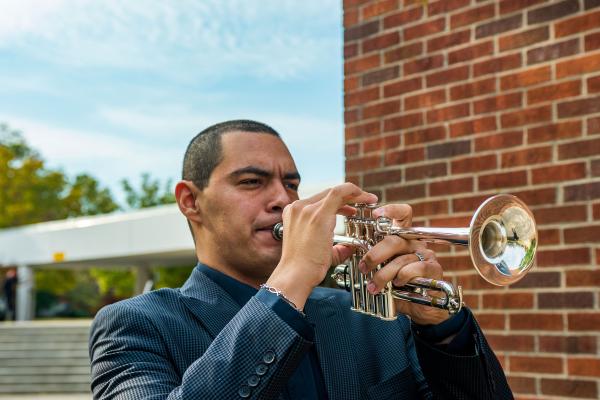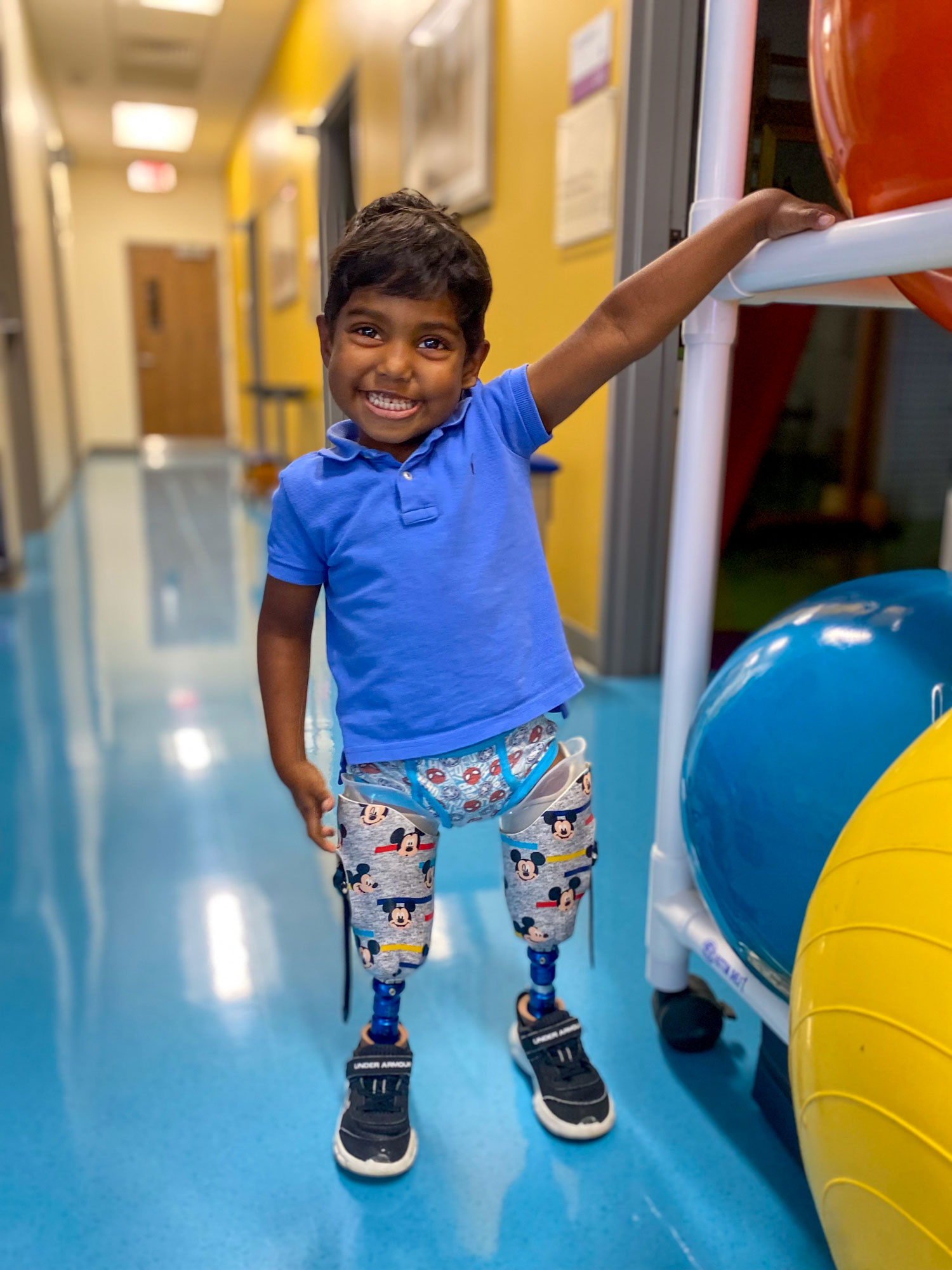
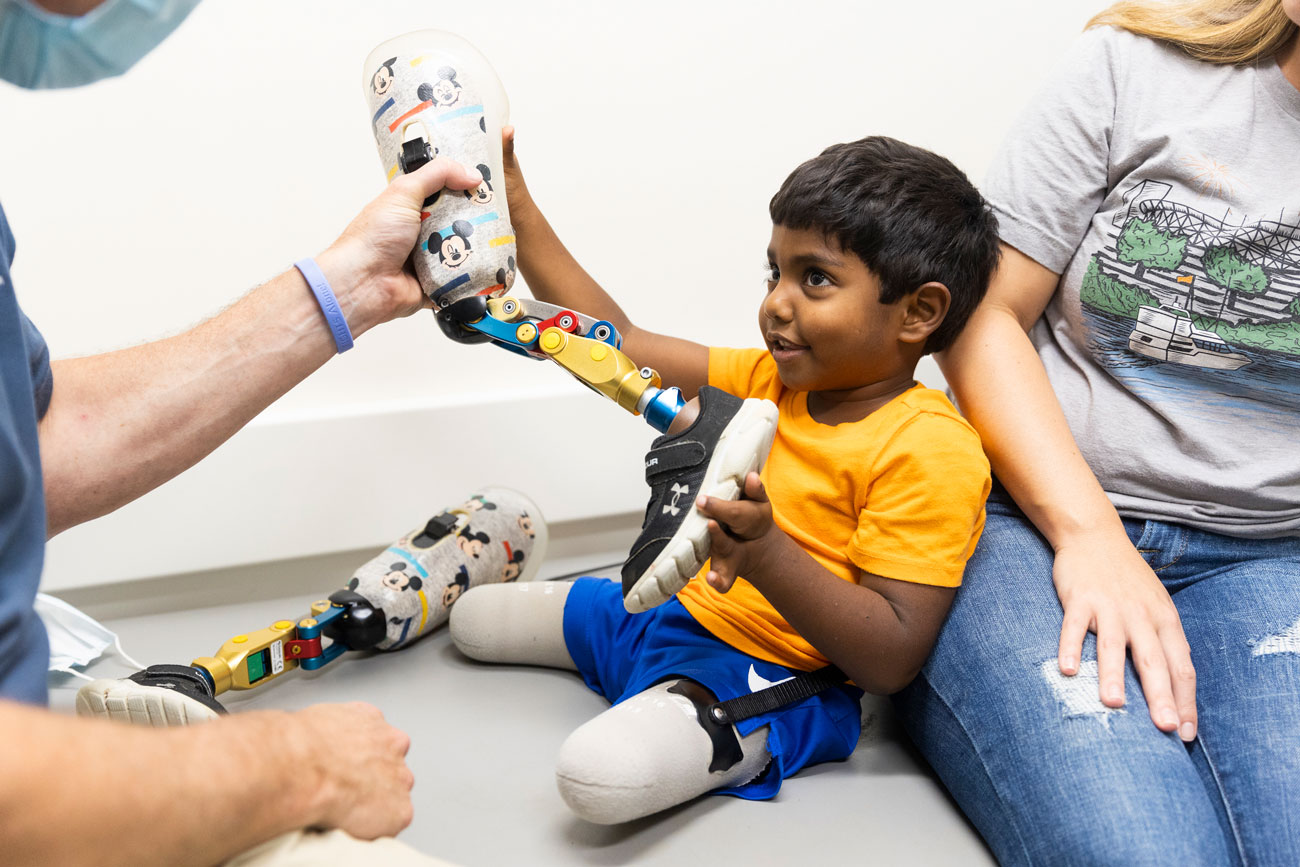
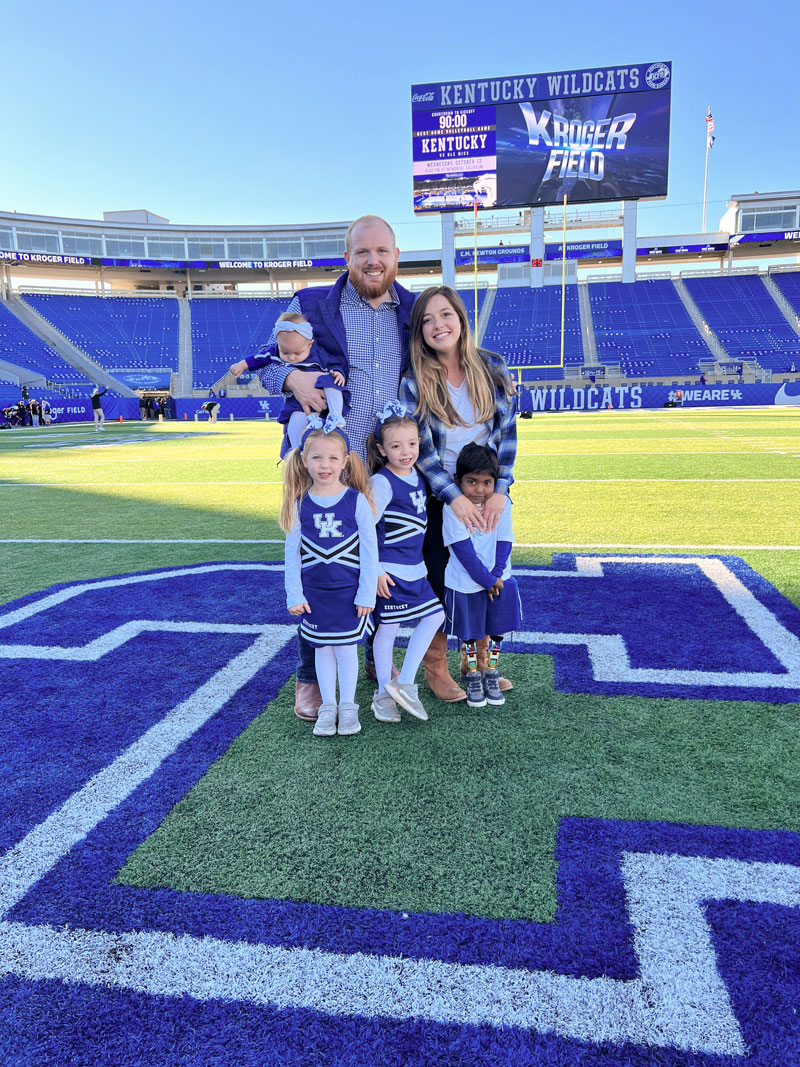

Fitting First Steps
Curt and Caroline Duncan always knew adoption would play an important role in growing their family.
“Part of our faith is that we believe that God has adopted us into his family,” Curt said. “I think that every person can play a part in adoption. We felt like our part was the actual adoption of a child.”
Working through an adoption agency, the Duncans felt called to adopt a child with special needs. After praying over the profiles of the children at the orphanage, the Knoxville, Tenn., couple knew which child would become their son: a special baby boy living in South India.
Solomon, or “Solo” for short, was born with tibial hemimelia, a rare condition leaving him without tibia bones, knees, ankles, over half the bones in his feet and six toes. This means his legs were stuck in a butterfly stretch and his feet were inverted. He is also missing bones in his hands.
Curt and Caroline, along with their two daughters and Caroline’s mother, traveled to India in early 2020 to bring Solo home. Shortly after, COVID-19 was declared a pandemic and the country went into lockdown. The family was confined to their hotel room for 28 days.
Once able to leave, they traveled to the remote village of Tamil Nadu to meet Solo. Soon, they were traveling home, working to find the top experts in the U.S. to help their son start his new life.
‘A hospital alive is worth the drive’
The Duncans talked with experts across the nation to find the care best for Solo. After hearing extensive praise for Shriners Hospitals for Children Medical Center in Lexington – and specifically Dr. Janet Walker, a UK HealthCare pediatric orthopaedic surgeon who practices at Shriners – the Duncans knew it was the right place.
Shriners and Kentucky Children’s Hospital share a collaborative pediatric orthopaedics program. Together, they are ranked in the Top 50 in the country for pediatric orthopaedic care by U.S. News & World Report Best Children’s Hospitals. While they are separate entities, the two hospitals work together to provide seamless care for children and adolescents across Kentucky. A staff of board-certified pediatric orthopaedic surgeons and anesthesiologists have cared for children at both institutions for over 35 years.
“We looked at major hospitals all over the country,” Curt said. “So many of them couldn’t give Solo the care he needed or in a way that would work for our family. Shriners has been a godsend for our family, and we think it is so special how connected Shriners and KCH (Kentucky Children’s Hospital) are."
“What we loved about Shriners is they were talking about Solomon at age 40,” Curt said. “They were talking about preparing him for a job, preparing him for relationships.”
The Duncans also valued how much their conversations made the family feel like they were partners in care.
“I always say, ‘A church alive is worth the drive.’ Well, a hospital alive is worth the drive,” Curt said with a laugh.
The big question: Should doctors try to straighten Solo’s legs, a multi-year process? Even then, this approach isn’t guaranteed to work.
Walker and Eric Miller, a prosthetic specialist at Shriners, explained to the Duncans that because Solo’s hips and femurs are in good shape, an amputation would be the best way to go.
So, in February 2022, Solo had a double, through-the-knee amputation at Kentucky Children’s Hospital. Walker and Dr. Vincent Prusick, a UK HealthCare orthopaedic surgeon who practices at Shriners, completed the surgery.
Solo’s ‘magic legs’
When Solo’s legs healed, he was fitted with his first prosthetics at the Pediatric Orthotics and Prosthetics Services housed at Shriners. With new prosthetics, it can take two or three visits to get them properly fitted and placed. Depending on his growth, Solo could receive new ones every one to three years.
“Solomon would have faced many ambulation challenges without receiving the bilateral prostheses,” Miller said. “In addition to allowing for a normal gait pattern, his prostheses allow him to be his ‘true’ anthropometric height. While often overlooked, height differences secondary to congenital deformities could have had both psychological and social implications for him.”
In September 2022, Solo got prosthetics that give him the ability to bend at the knee. The Duncans call them his “magic legs.” They are decorated with pictures of Mickey Mouse – his favorite cartoon character.
“Solo absolutely loves his prosthetics,” Caroline said. “They said he would only want to wear them three to five hours a day, but he wakes up asking for them and doesn’t take them off until night time. It has absolutely changed his life forever and will give him opportunities none of us ever dreamed of him having.”
One of Solo’s early challenges was learning to walk forward rather than with a round gait, which was caused by his legs being in that butterfly stretch for so long. He attends physical therapy and uses a walker to help solve this issue. It’s still a work in progress, but Solo is a fighter and a troubleshooter, says his dad.

